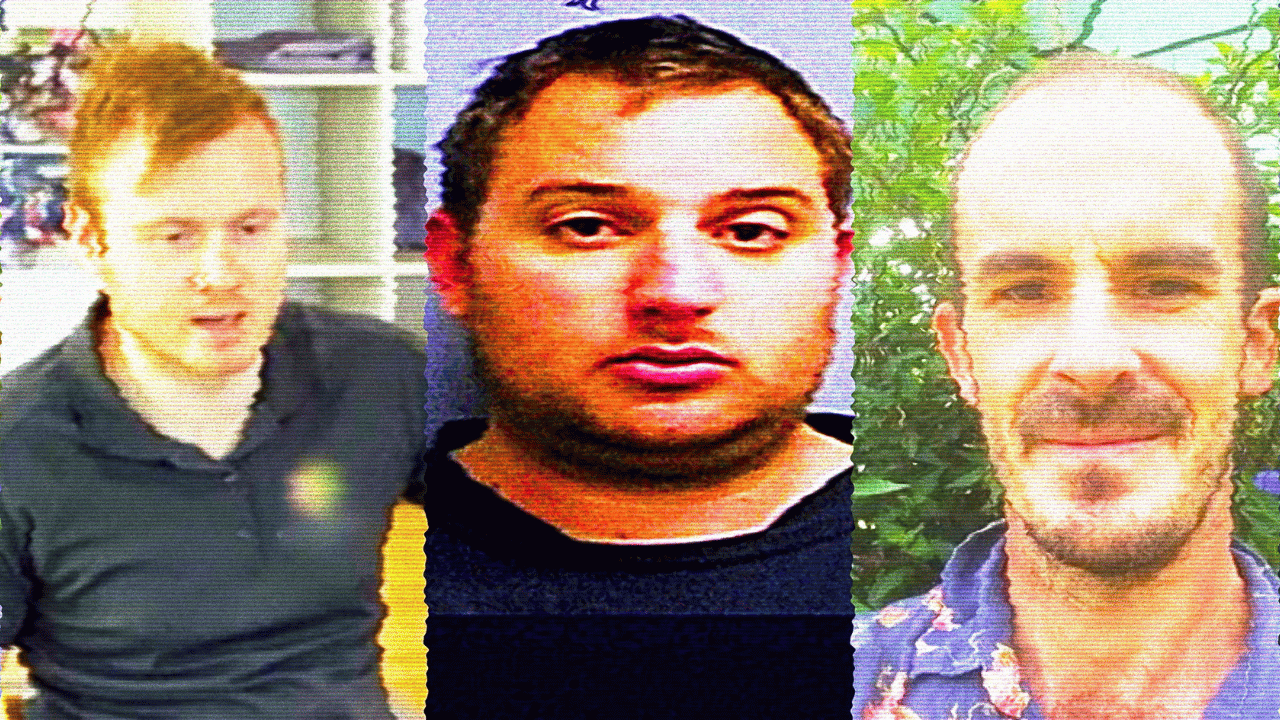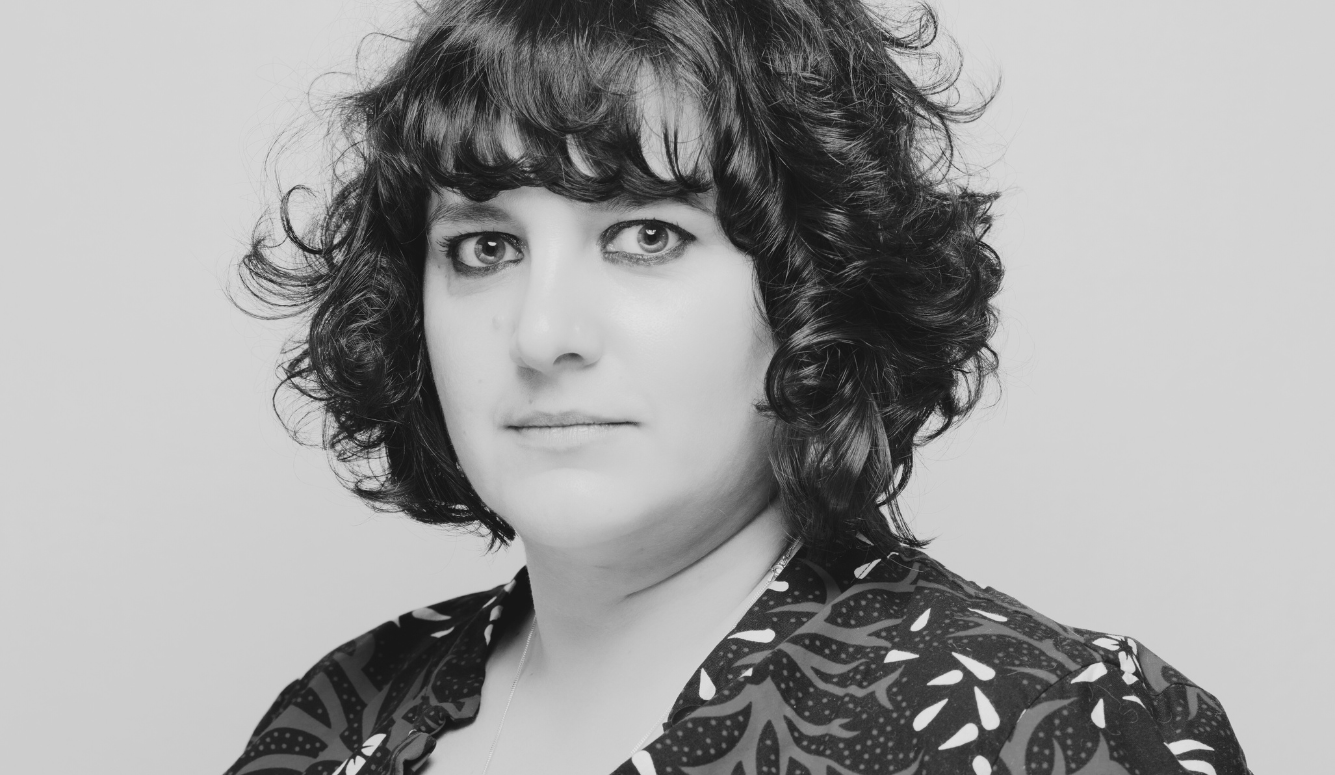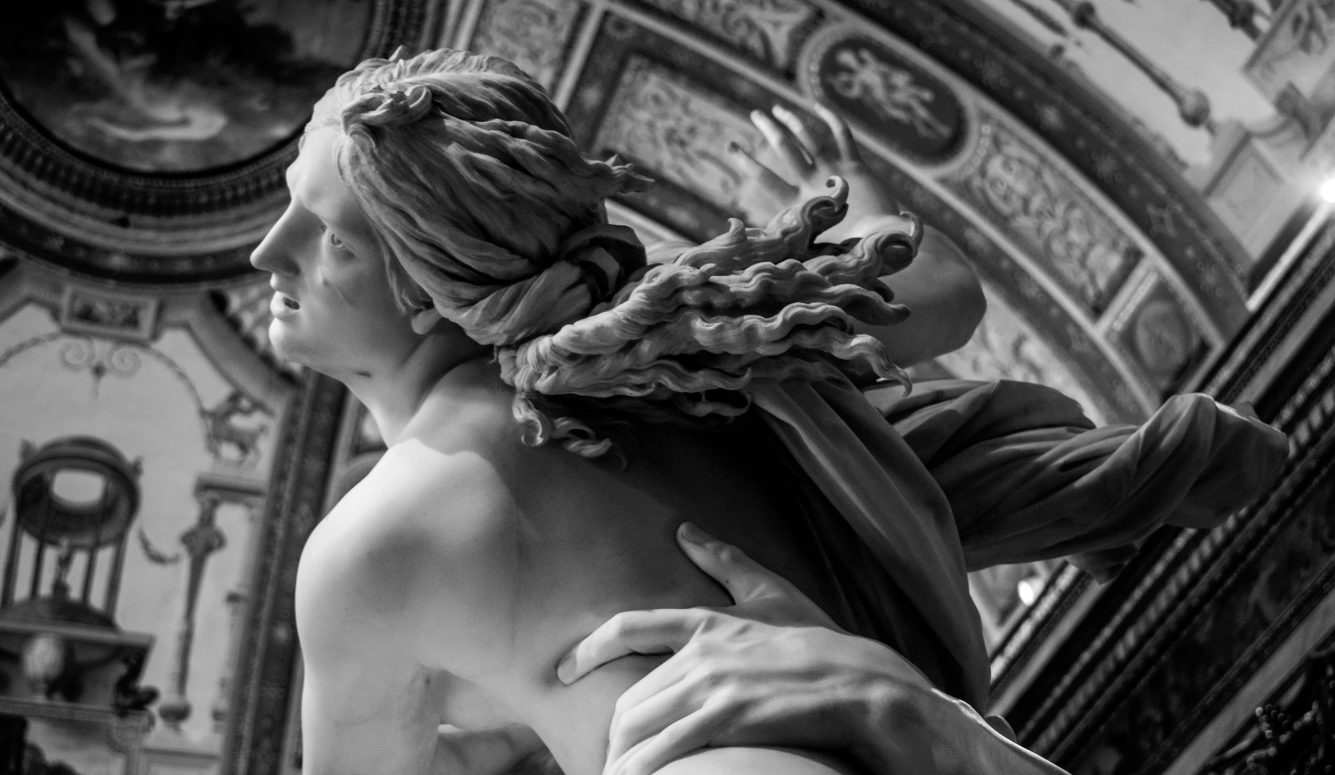Anthropology
The Dangerous Life of an Anthropologist
Remembering one of the last titans of anthropology.
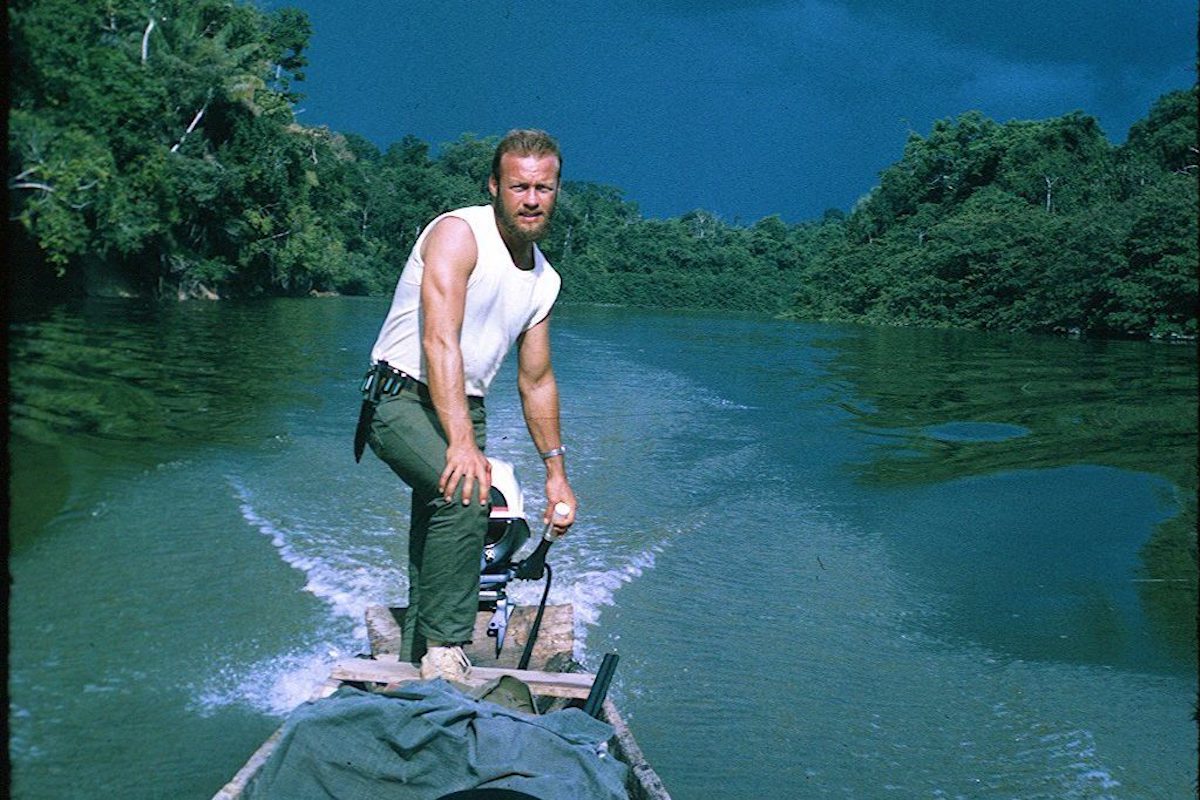
Limping in crutches, his broken leg shielded in plaster following a jogging accident, the distinguished biologist Edward O. Wilson made his way slowly toward the stage at a convention of the American Association for the Advancement of Science in 1978. Climbing the stairs, taking his seat, and shuffling his notes, a sudden burst of activity punctuated the silence as the entire front row of the audience leapt onto the stage hurling insults. They jostled Wilson and then poured iced water over his head. The protesters would turn out to be Marxists, incensed by the publication of Wilson’s book Sociobiology.
This story has become a familiar feature of the nature/nurture debate, used to illustrate the vitriolic hostility expressed by ideological groups scrambling to silence what most people already take to be an incontrovertible fact: that humans, just like every other species on earth, have a nature. As crowds abandoned Wilson to evacuate the auditorium that day, one man at the back of the room tried to push his way forward against the multitude heading towards the exits. “It was the most hateful, frightening, and disgusting behavior I’ve ever witnessed at an academic assembly,” the famed anthropologist Napoleon Chagnon would later recall. He didn’t know it then, but the events of that day were an omen of things to come for Chagnon himself, whose Wilsonian worldview would help to bring about one of anthropology’s greatest controversies.
Chagnon, who passed away last week, has been remembered as one of the last titans of anthropology, and perhaps the last ethnographer in the vein of Mead and Malinowski to go deep into a remote part of the world and live among a relatively un-acculturated and unstudied people. The research he conducted there would inspire millions to take an interest in the world’s traditional cultures and the field of cultural anthropology. Dripping in perspiration, his hands and face swollen by stinging insects, Chagnon disembarked at a remote Venezuelan village along a piranha-infested river deep in the Amazonian interior in 1964. Stepping out of his aluminum rowboat, he was immediately nauseated by the smell of decaying vegetable matter and feces. He pushed his way through a wall of leaves and stepped into the open: “I saw a dozen burly, naked, sweaty, hideous men nervously staring at us down the shaft of their drawn arrows!” The Yanomamö people lived with the ever-present threat of violence from raiding villages, and from his very first encounter with them, Chagnon understood the paranoia that consequently pervaded their everyday life.

It took a long time for Chagnon to acclimatize to the deep interior of the Amazon Rainforest and its unique threats. The insects continued to plague him—not just the flying stinging ones, but termites that claimed unguarded shoes as nests, and spiders and scorpions drawn to warm clothes in the middle of the night. He would later find himself face to face with an anaconda. “I laid my double-barrel twelve-gauge shotgun on the bank next to me,” he recalled. Moments later, “the water exploded in front of me: a very large anaconda head shot out of the water and whizzed just inches from my face. I immediately went into a rage: this son-of-a-bitch of a snake was trying to kill me!” Chagnon began firing rounds into the snake, which violently twisted and turned as he reloaded, fired, and reloaded. But Chagnon was more worried about jaguars, which were known to kill groups of men in a single attack. From time to time, Chagnon and his companions would find themselves stalked by these predators, sometimes for hours on end. They could be heard at night, prowling around the makeshift camps he slept in as he travelled between villages. One night, he awoke to find a jaguar baring its teeth at him as he lay in his hammock. But the mosquito net and the yelling of villagers confused the animal, which darted back into the bush.
In 1966, Chagnon began working with the geneticist James Neel. Neel had had managed to convince the Atomic Energy Commission to fund a genetic study of an isolated population and was able to pay Chagnon a salary to assist his research there. Neel’s team took blood samples from the Yanomamö, and began administering the Edmonston B vaccine when they discovered that the Yanomamö had no antibodies to the measles. In some ways, the Yanomamö sounded like something out of any anthropology textbook—they were patrilineal and polygamous (polygyny); like other cultures around the world, they carved a position for the levirate—a man who married his dead brother’s wife; they had ceremonial roles and practised ritual confinement with taboos on food and sex. But sometimes this exotic veneer would be punctured by their shared humanity, particularly their mischievous sense of humour. Early in Chagnon’s research, the Yanomamö pranked the anthropologist by providing him with vulgarities when he asked their names. He did not realise this until he began bragging to a group of Yanomamö about how well he now understood their genealogies. As he began, the Yanomamö erupted into laughter, tears streaming from their faces. They begged him to continue and, oblivious, Chagnon went on: “Hairy Cunt was married to the headman, Long Dong, their youngest son was Asshole, and so on.” When he discovered he’d been tricked, Chagnon was embarrassed and furious that five months of patient name gathering had yielded nothing but a litany of insults. From that day forward, he would cross-check all information between individual Yanomamö informants and villages.
But for all their jocularity, Chagnon found that up to 30 percent of all Yanomamö males died a violent death. Warfare and violence were common, and duelling was a ritual practice, in which two men would take turns flogging each other over the head with a club, until one of the combatants succumbed. Chagnon was adamant that the primary causes of violence among the Yanomamö were revenge killings and women. The latter may not seem surprising to anyone aware of the ubiquity of ruthless male sexual competition in the animal kingdom, but anthropologists generally believed that human violence found its genesis in more immediate matters, such as disputes over resources. When Chagnon asked the Yanomamö shaman Dedeheiwa to explain the cause of violence, he replied, “Don’t ask such stupid questions! Women! Women! Women! Women! Women!” Such fights erupted over sexual jealousy, sexual impropriety, rape, and attempts at seduction, kidnap and failure to deliver a promised girl.
Internecine raids and attacks often involved attempts by a man or group to abduct another’s women. “The victim is grabbed by her abductors by one arm, and her protectors grab the other arm. Then both groups pull in opposite directions,” Chagnon learned. In one instance, a woman’s arms were reportedly pulled out of their sockets: “The victim invariably screams in agony, and the struggle can last several long minutes until one group takes control of her.” Although one in five Yanomamö women Chagnon interviewed had been kidnapped from another village, some of these women were grateful to find that their new husbands were less cruel than their former ones. The treatment of Yanomamö women could be particularly gruesome, and Chagnon had to wrestle with the ethical dilemmas that confront anthropologists under such circumstances—should he intervene or remain an observer? Men frequently beat their wives, mainly out of sexual jealousy, shot arrows into them, or even held burning sticks between their legs to discourage the possibility of infidelity. On one occasion, a man bludgeoned his wife in the head with firewood and in front of an impassive audience. “Her head bounced off the ground with each ruthless blow, as if he were pounding a soccer ball with a baseball bat. The head-man and I intervened at that point—he was killing her.” Chagnon stitched her head back up. The woman recovered but she subsequently dropped her infant into a fire as she slept, and was later killed by a venomous snake. Life in the Amazon could be nasty, brutish, and short.
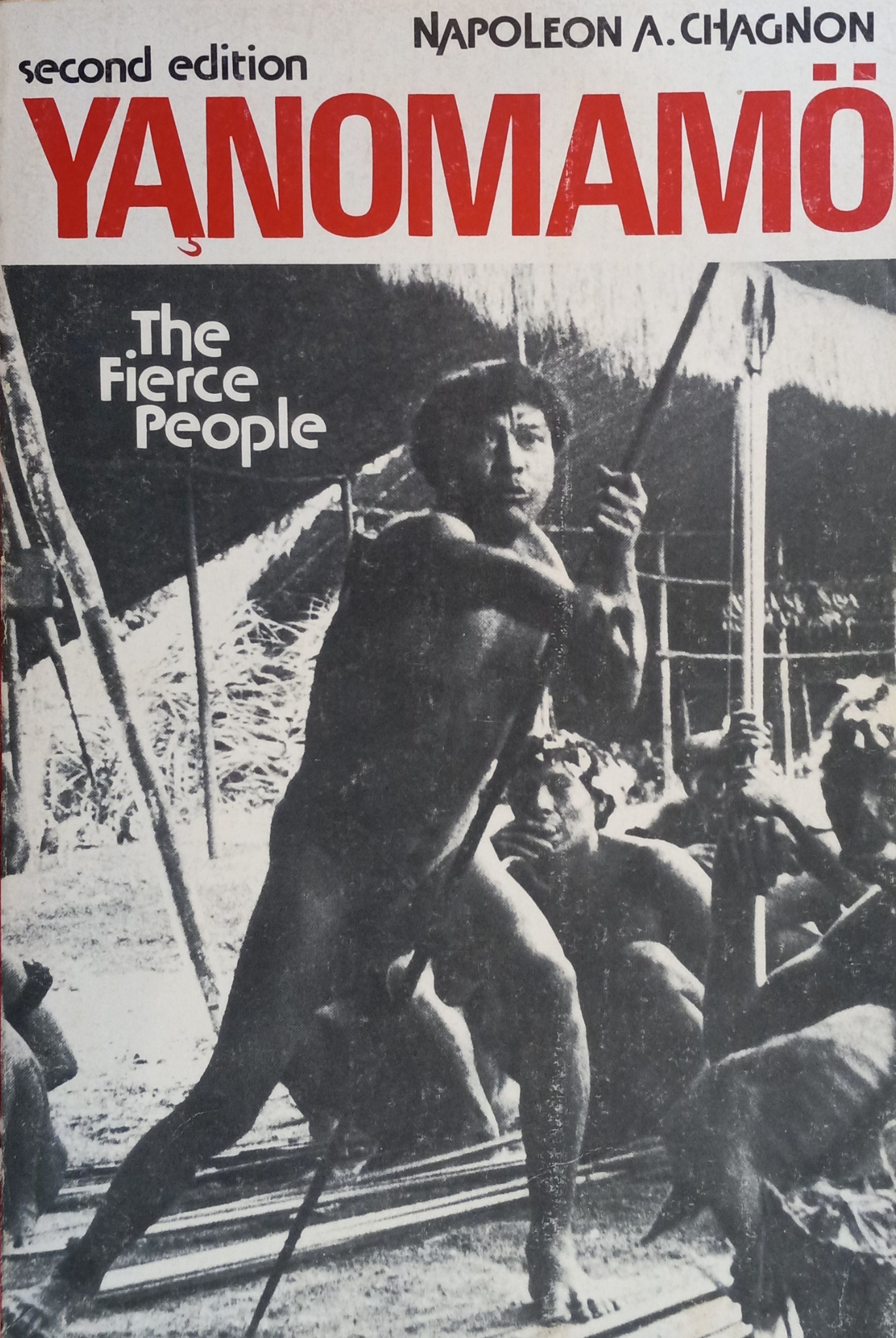
Chagnon would make more than 20 fieldwork visits to the Amazon, and in 1968 he published Yanomamö: The Fierce People, which became an instant international bestseller. The book immediately ignited controversy within the field of anthropology. Although it commanded immense respect and became the most commonly taught book in introductory anthropology courses, the very subtitle of the book annoyed those anthropologists, who preferred to give their monographs titles like The Gentle Tasaday, The Gentle People, The Harmless People, The Peaceful People, Never in Anger, and The Semai: A Nonviolent People of Malaya. The stubborn tendency within the discipline was to paint an unrealistic façade over such cultures—although 61 percent of Waorani men met a violent death, an anthropologist nevertheless described this Amazonian people as a “tribe where harmony rules,” on account of an “ethos that emphasized peacefulness.”1 Anthropologists who considered such a society harmonious were unlikely to be impressed by Chagnon’s description of the Yanomamö as “The Fierce People,” where “only” 30 percent of males died by violence. The same anthropologist who had ascribed a prevailing ethos of peace to the Waoroni later accused Chagnon, in the gobbledygook of anthropological jargon, of the “projection of traditional preconceptions of the Western construction of Otherness.”2
These anthropologists were made more squeamish still by Chagnon’s discovery that the unokai of the Yanomamö—men who had killed and assumed a ceremonial title—had about three times more children than others, owing to having twice as many wives. Drawing on this observation in his 1988 Science article “Life Histories, Blood Revenge, and Warfare in a Tribal Population,” Chagnon suggested that men who had demonstrated success at a cultural phenomenon, the military prowess of revenge killings, were held in higher esteem and considered more attractive mates. In some quarters outside of anthropology, Chagnon’s theory came as no surprise, but its implication for anthropology could be profound. In The Better Angels of Our Nature, Steven Pinker points out that if violent men turn out to be more evolutionarily fit, “This arithmetic, if it persisted over many generations, would favour a genetic tendency to be willing and able to kill.”
The question of whether or not higher fitness for violent males is a universal phenomenon common to all humanity in prehistory remains contested. But Chagnon appears to have thought so: “Conflicts over the means of reproduction—women—dominated the political machinations of men during the vast span of human history and shaped human male psychology.” Chagnon’s detractors were appalled. Not only was he accusing a pristine Amazon society of rewarding its most violent males with reproductive success, he was also inferring that mankind itself was stained with the blood of our ancestors. This hypothesis threatened to force an entirely new way of thinking about human behaviour, and promote a new paradigm of human behavioural ecology. Chagnon had tottered onto the unforgiving battlefield of the science wars, and anthropologists lined up to shower him with criticisms and derision. The contempt for Chagnon became so petty that some anthropologists refused to use his transliteration “Yanomamö,” opting for “Yanomami” instead. If they couldn’t agree on the name of the people, what else could they hope to agree about?
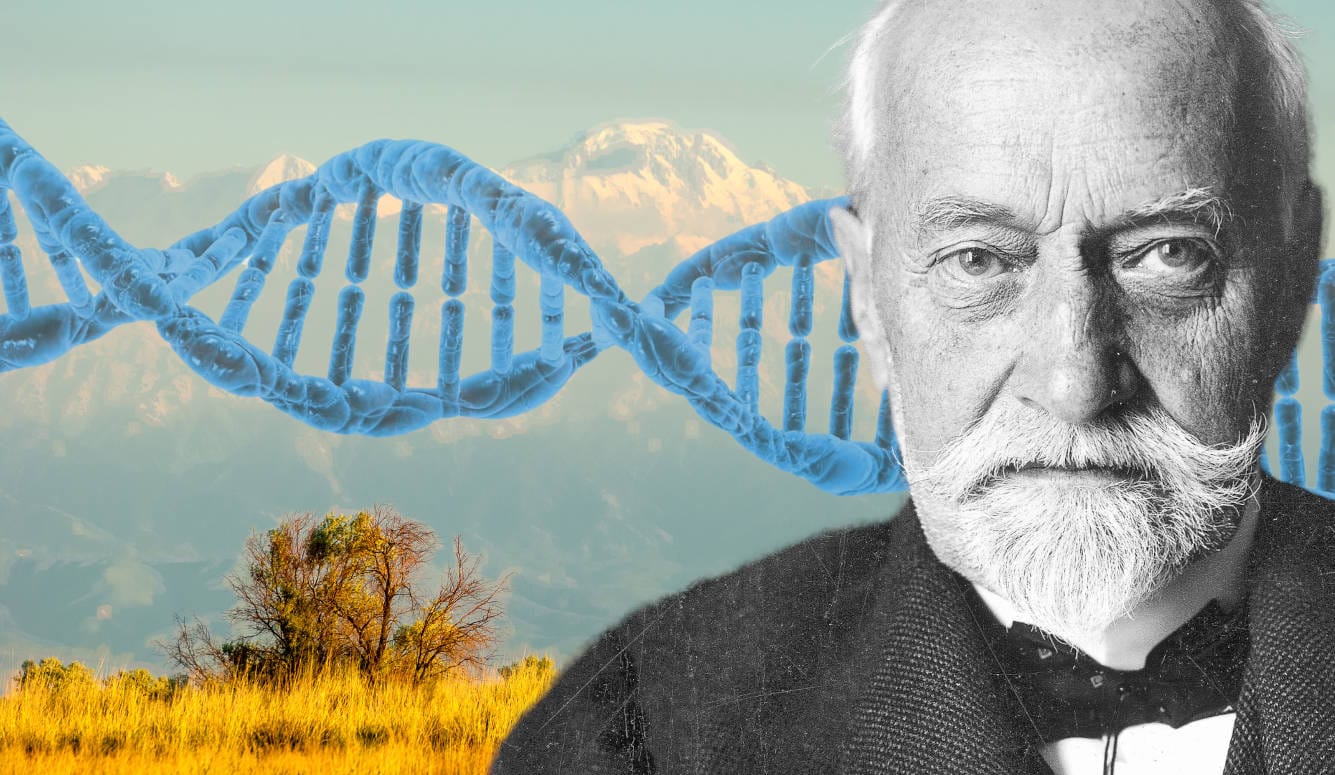
Chagnon considered his most formidable critic to be the eminent anthropologist Marvin Harris. Harris had been crowned the unofficial historian of the field following the publication of his all-encompassing work The Rise of Anthropological Theory. He was the founder of the highly influential materialist school of anthropology, and argued that ethnographers should first seek material explanations for human behavior before considering alternatives, as “human social life is a response to the practical problems of earthly existence.”3 Harris held that the structure and “superstructure” of a society are largely epiphenomena of its “infrastructure,” meaning that the economic and social organization, beliefs, values, ideology, and symbolism of a culture evolve as a result of changes in the material circumstances of a particular society, and that apparrently quaint cultural practices tend to reflect man’s relationship to his environment. For instance, prohibition on beef consumption among Hindus in India is not primarily due to religious injunctions. These religious beliefs are themselves epiphenomena to the real reasons: that cows are more valuable for pulling plows and producing fertilizers and dung for burning. Cultural materialism places an emphasis on “-etic” over “-emic” explanations, ignoring the opinions of people within a society and trying to uncover the hidden reality behind those opinions.
Naturally, when the Yanomamö explained that warfare and fights were caused by women and blood feuds, Harris sought a material explanation that would draw upon immediate survival concerns. Chagnon’s data clearly confirmed that the larger a village, the more likely fighting, violence, and warfare were to occur. In his book Good to Eat: Riddles of Food and Culture Harris argued that fighting occurs more often in larger Yanomamö villages because these villages deplete the local game levels in the rainforest faster than smaller villages, leaving the men no option but to fight with each other or to attack outside groups for meat to fulfil their protein macronutrient needs. When Chagnon put Harris’s materialist theory to the Yanomamö they laughed and replied, “Even though we like meat, we like women a whole lot more.”4 Chagnon believed that smaller villages avoided violence because they were composed of tighter kin groups—those communities had just two or three extended families and had developed more stable systems of borrowing wives from each other.
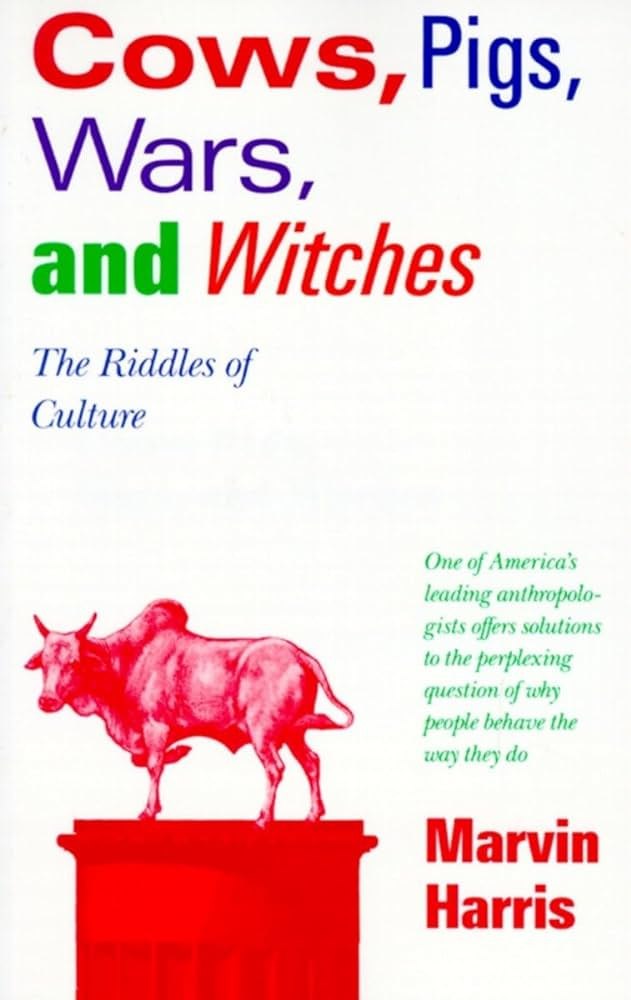
Despite the Yanomamö’s rebuke, it is evident from his popular book Cows, Pigs, War and Witches and his technical book Cultural Materialism: The Struggle for A Science of Culture that Harris saw himself as the world’s foremost anthropological theoretician. His mission was to take anthropology to new heights of knowledge by uncovering the material logic behind the world’s belief systems and social behavior. Harris threw down a challenge to Chagnon that would shape his Amazon research in 1975: prove that the Yanomamö get more daily protein than what is in a Big Mac and Harris would eat his own hat. While Chagnon and another anthropologist Raymond Hames did indeed find this to be the case in 1975, another anthropologist Kenneth Good found daily protein consumption to be just under that of a Big Mac, leaving the debate in limbo.5 Nonetheless, these findings probably left Harris uncomfortable, and his opposition to human behavioral ecology and sociobiology continued to escalate.
One evening, Chagnon attended a debate about sociobiology between Edward Wilson and Harris at the Smithsonian Institute. At one point, Harris began describing the dangers of sociobiology, and then paused. “Did you know,” he asked, “that there is a certain anthropologist, a man who has become famous for his long-term studies of Amazon Indians, who claims, ladies and gentleman, that this tribe not only has a gene for warfare, but he claims they also have genes for infanticide!” This was such a caricature of Chagnon’s actual view that he challenged Harris to defend it during the Q&A that followed the debate. Questions were handed from the audience to the debaters written on cards, and Chagnon demanded that Harris “Identify the anthropologist who claimed that the people he studied had genes for warfare and infanticide.” Throughout the question time period Harris kept shuffling Chagnon’s question to the back of the pile until the moderator brought the event to a close and thanked everyone for their attendance. Unwilling to let Harris off the hook, Chagnon rose from his seat in the audience and again demanded that Harris identify this famous anthropologist who had spoken of genes for warfare and infanticide. The audience immediately recognized Chagnon from his documentaries and began shouting, “Let him speak! Let him speak!” Momentarily taken aback, Harris confessed that if he had misunderstood Chagnon that he was welcome to return to anthropology, to which Chagnon replied that he had never left anthropology.
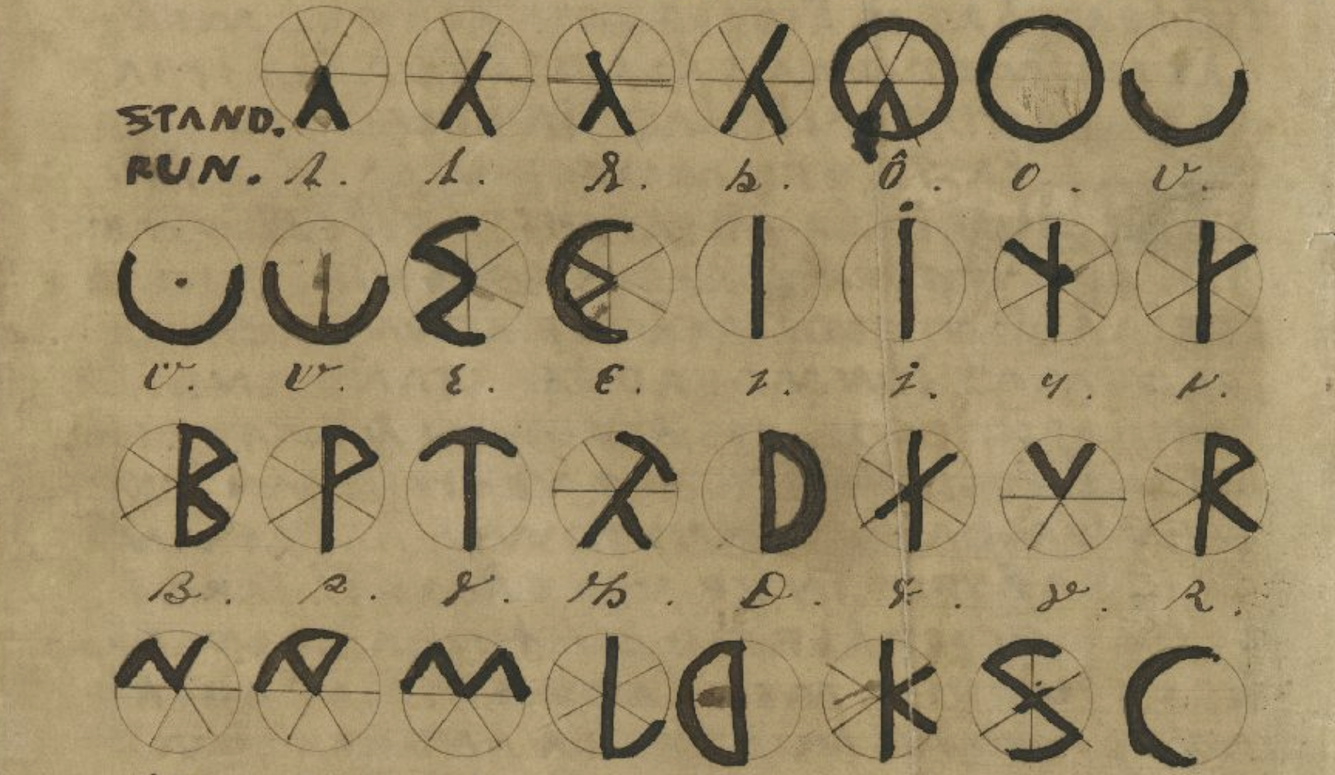
While Harris and other anthropologists in the United States continued to criticize Chagnon, his standing began to deteriorate on another front. From the moment he arrived in the Amazon, Chagnon maintained cordial relations with a missionary priest of the Salesians of Don Bosco. In fact, Chagnon and the priest became such good friends that the priest asked Chagnon to kill one of his fellow missionaries for him, a man who had broken his vows of celibacy by sleeping with a Yanomamö woman. The priest worried that this could bring shame to the Salesian order. Of course, Chagnon refused, and his refusal strained their relationship. Their relationship worsened when Chagnon discovered that the missionaries had been distributing shotguns to the natives and that these were being used in warfare. Furthermore, all of Chagnon’s recommendations for preventing measles outbreaks were ignored by the Salesians, who built missionaries and tried to have the Yanomamö concentrate around them, which helped the disease to spread rapidly. Their relationship finally collapsed altogether after Chagnon cooperated with a documentary that painted the Salesians in a less than flattering light. By the early 1990s, the missionaries were increasingly worried about Chagnon’s presence in the Amazon, especially when it came to light that the BBC and Nova would be producing a new documentary in the rainforest about his dispute with Marvin Harris. By the early 1990s, the Salesians were attempting to block his lifetime of fieldwork in the Amazon, and they successfully lobbied Maria Luisa Allais, the head of Venezuelan Indian Commission, to refuse him a permit he required for re-entry.
Then, in 1993, tragedy struck in the Amazon when gold miners crossed the border from Brazil and slaughtered a number of Yanomamö, including women and children. The explorer Charles Brewer-Carías was chosen to head a presidential commission into the massacre, and he wanted Chagnon on the commission as one of the few anthropologists in the world who spoke Yanomamö. When President Carlos Perez of Venezuela learned that Chagnon had been denied an entry permit, he telephoned the Ministry of Education and ordered them to issue Chagnon with one at once. A visibly nervous Maria Luisa Allais offered Chagnon his papers. That Chagnon went above the head of the Indian Commission and was now installed on the presidential commission investigating the massacre only infuriated the Salesians further. They believed that they ought to be the ones conducting the investigation. On the very first day of their investigation at the site of the massacre, a helicopter arrived bearing men armed with machine guns and a Salesian bishop, who ordered Brewer-Carías and Chagnon to leave. With the government on the brink of a coup and unwilling to enforce law and order in the deep interior of the Amazon, the commission to investigate the massacre quickly fell apart. Chagnon was left with lifelong regrets that there had been no justice for the dead.
Notwithstanding their bitter intellectual rivalry, Marvin Harris would play no role in the sensational accusations that Chagnon had behaved unethically while conducting his research in the Amazon. These would be made by a coalition of less prominent anthropologists, some with official functions in activist organizations, which had been formed to oppose Chagnon in any way possible. David Maybury-Lewis, the head of the organization Cultural Survival was an early critic of Chagnon, and one of the first anthropologists to complain about the subtitle of Yanomamö: The Fierce People. Maybury-Lewis’s student Terence Turner, president of Survival International USA, was an even more outspoken critic of Chagnon. Survival International, an organization that has more recently attacked Steven Pinker for The Better Angels of Our Nature has long promoted the Rousseauian image of a traditional people who need to be preserved in all their natural wonder from the ravages of the modern world. Survival International does not welcome anthropological findings that complicate this harmonious picture, and Chagnon had wandered straight into their line of fire. Their website still features a petition denouncing Chagnon’s characterization of the Yanomamö, signed by a handful of his critics, “We absolutely disagree with Napoleon Chagnon’s public characterization of the Yanomami as fierce, violent, and archaic people.”
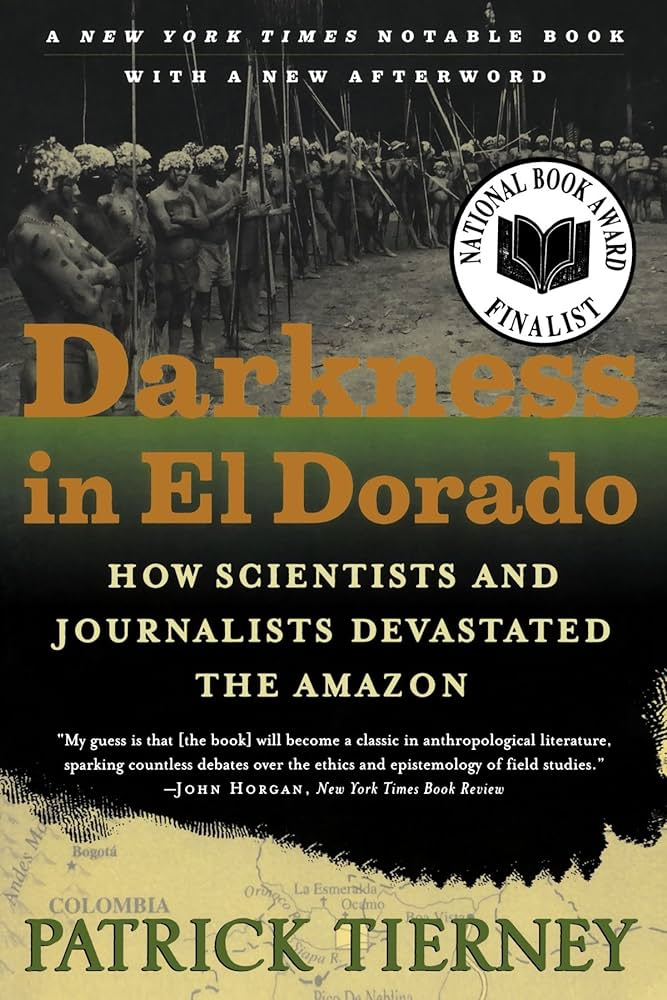
For years, Survival International’s Terence Turner had been assisting a self-described journalist, Patrick Tierney, as the latter investigated Chagnon for his book, Darkness in El Dorado: How Scientists and Journalists Devastated the Amazon. In 2000, as Tierney’s book was being readied for publication, Turner and his colleague Leslie Sponsel wrote to the president of the American Anthropological Association (AAA) and informed her that an unprecedented crisis was about to engulf the field of anthropology. This, they warned, would be a scandal that, “in its scale, ramifications, and sheer criminality and corruption, is unparalleled in the history of Anthropology.” Tierney alleged that Chagnon and Neel had spread measles among the Yanomamö in 1968 by using compromised vaccines, and that Chagnon’s documentaries depicting Yanomamö violence were faked by using Yanomamö to act out dangerous scenes, in which further lives were lost. Chagnon was blamed, inter alia, for inciting violence among the Yanomamö, cooking his data, starting wars, and aiding corrupt politicians. Neel was also accused of withholding vaccines from certain populations of natives as part of an experiment. The media were not slow to pick up on Tierney’s allegations, and the Guardian ran an article under an inflammatory headline accusing Neel and Chagnon of eugenics: “Scientists ‘killed Amazon Indians to test race theory.'” Turner claimed that Neel believed in a gene for “leadership” and that the human genetic stock could be upgraded by wiping out mediocre people. “The political implication of this fascistic eugenics,” Turner told the Guardian, “is clearly that society should be reorganised into small breeding isolates in which genetically superior males could emerge into dominance, eliminating or subordinating the male losers.”
By the end of 2000, the American Anthropological Association announced a hearing on Tierney’s book. This was not entirely reassuring news to Chagnon, given their history with anthropologists who failed to toe the party line. During the Freeman-Mead controversy, in which New Zealand anthropologist Derek Freeman had critiqued Margaret Mead’s book Coming of Age in Samoa, the American Association for the Advancement of Science’s magazine Science had praised Freeman’s critique at the same time the American Anthropological Association had denounced it. Thereafter, the AAA denounced Science and the American Association for the Advancement of Science for not denouncing Freeman. Now, an Academies of Sciences investigation concluded that Tierney’s claims in Darkness in El Dorado were “demonstrably false,” and that his book represented “a grave disservice…to science itself.” The American Anthropological Association, on the other hand, stated that, “Darkness in El Dorado has contributed a valuable service to our discipline.” A taskforce was formally set up after this, not to “investigate” Chagnon, which would have violated the AAA’s Code of Ethics, but to “inquire” about Tierney’s allegations.
Behind the closed doors of that inquiry, tensions developed. “The book is just a piece of sleaze, that’s all there is to it,” the head of AAA’s taskforce Jane Hill wrote to another anthropologist about Tierney’s book. “But I think the AAA had to do something,” Hill added, “because I really think that the future of work by anthropologists with indigenous peoples in Latin America—with a high potential to do good—was put seriously at risk by its accusations.”6 Tormented to learn that the anthropological community were actually taking the accusations of Darkness in El Dorado seriously, Chagnon was hospitalized after he collapsed suffering from stress. Suspecting that the taskforce had been constituted to find Chagnon guilty of at least some of Tierney’s accusations, the anthropologist Raymond Hame resigned from the panel. In 2002, the AAA accepted the taskforce’s report. Although the taskforce was not an “investigation” concerned with any particular person, for all intents and purposes, it blamed Chagnon for portraying the Yanomamö in a way that was harmful and held him responsible for prioritizing his research over their interests.
Nonetheless, the most serious claims Tierney made in Darkness in El Dorado collapsed like a house of cards. Elected Yanomamö leaders issued a statement in 2000 stating that Chagnon had arrived after the measles epidemic and saved lives, “Dr. Chagnon—known to us as Shaki—came into our communities with some physicians and he vaccinated us against the epidemic disease which was killing us. Thanks to this, hundreds of us survived and we are very thankful to Dr. Chagnon and his collaborators for help.”7 Investigations by the American Society of Human Genetics and the International Genetic Epidemiology Society both found Tierney’s claims regarding the measles outbreak to be unfounded. The Society of Visual Anthropology reviewed the so-called faked documentaries, and determined that these allegations were also false. Then an independent preliminary report released by a team of anthropologists dissected Tierney’s book claim by claim, concluding that all of Tierney’s most important assertions were either deliberately fraudulent or, at the very least, misleading. The University of Michigan reached the same conclusion. “We are satisfied,” its Provost stated, “that Dr. Neel and Dr. Chagnon, both among the most distinguished scientists in their respective fields, acted with integrity in conducting their research… The serious factual errors we have found call into question the accuracy of the entire book [Darkness in El Dorado] as well as the interpretations of its author.”8 Academic journal articles began to proliferate, detailing the mis-inquiry and flawed conclusions of the 2002 taskforce. By 2005, only three years later, the American Anthropological Association voted to withdraw the 2002 taskforce report, re-exonerating Chagnon.
A 2000 statement by the leaders of the Yanomamö and their Ye’kwana neighbours called for Tierney’s head: “We demand that our national government investigate the false statements of Tierney, which taint the humanitarian mission carried out by Shaki [Chagnon] with much tenderness and respect for our communities.”9 The investigation never occurred, but Tierney’s public image lay in ruins and would suffer even more at the hands of historian of science Alice Dreger, who interviewed dozens of people involved in the controversy. Although Tierney had thanked a Venezuelan anthropologist for providing him with a dossier of information on Chagnon for his book, the anthropologist told Dreger that Tierney had actually written the dossier himself and then misrepresented it as an independent source of information.10
By 2012, Tierney had disappeared. He would not write or appear in public again. Chagnon, on the other hand, was elected to the National Academy of Sciences, the most prestigious accolade that can befall a scientist after the Nobel Prize. Chagnon considered this a vindication, but to this day, some anthropologists cling to Tierney’s allegations, or some revised version of them. Turner abandoned many of Tierney’s claims but spent years looking for further evidence against Chagnon. In 2013, the anthropologist David Price wrote an article for the radical left-wing outlet CounterPunch castigating the National Academy of Sciences for electing Chagnon to such a prestigious position, and cited Tierney’s book without bothering to mention that author and argument had since been discredited. Anthropologist Marshall Sahlins, who had also praised Tierney’s book in earlier times, resigned from the National Academy of Sciences to protest Chagnon’s election. Sahlin’s protégé David Graeber explained that, “Sahlins is a man of genuine principle… He’s never had a lot of patience for shirtless macho Americans who descend into jungles, declaring their inhabitants to be violent savages, and then use that as an excuse to start behaving like violent savages themselves.” The row between Chagnon’s detractors and supporters continues to this day, in spite of the available evidence. As Alice Dreger told Graeber on social media in 2013, “If Sahlins can’t face the facts about what Chagnon didn’t do, then maybe he shouldn’t be in the Nat Acad of Sci anyway.”
Scientific American has described the controversy as “Anthropology’s Darkest Hour,” and it raises troubling questions about the entire field. In 2013, Chagnon published his final book, Noble Savages: My Life Among Two Dangerous Tribes—The Yanomamö and the Anthropologists. Chagnon had long felt that anthropology was experiencing a schism more significant than any difference between research paradigms or schools of ethnography—a schism between those dedicated to the very science of mankind, anthropologists in the true sense of the word, and those opposed to science; either postmodernists vaguely defined, or activists disguised as scientists who seek to place indigenous advocacy above the pursuit of objective truth. Chagnon identified Nancy Scheper-Hughes as a leader in the activist faction of anthropologists, citing her statement that we “need not entail a philosophical commitment to Enlightenment notions of reason and truth.”11
Whatever the rights and wrong of his debates with Marvin Harris across three decades, Harris’s materialist paradigm was a scientifically debatable hypothesis, which caused Chagnon to realize that he and his old rival shared more in common than they did with the activist forces emerging in the field: “Ironically, Harris and I both argued for a scientific view of human behavior at a time when increasing numbers of anthropologists were becoming skeptical of the scientific approach.” When Nancy Scheper-Hughes wrote that “if we cannot begin to think about social institutions and practices in moral or ethical terms, then anthropology strikes me as quite weak and useless,”12 Marvin Harris added that “if we cannot begin to think about social institutions and practices in scientific-objective terms then anthropology will be even weaker and more useless.”13
Both Chagnon and Harris agreed that anthropology’s move away from being a scientific enterprise was dangerous. And both believed that anthropologists, not to mention thinkers in other fields of social sciences, were disguising their increasingly anti-scientific activism as research by using obscurantist postmodern gibberish. Observers have remarked at how abstruse humanities research has become and even a world famous linguist like Noam Chomsky admits, “It seems to me to be some exercise by intellectuals who talk to each other in very obscure ways, and I can’t follow it, and I don’t think anybody else can.” Chagnon resigned his membership of the American Anthropological Association in the 1980s, stating that he no longer understood the “unintelligible mumbo jumbo of postmodern jargon” taught in the field. 14 In his last book, Theories of Culture in Postmodern Times, Harris virtually agreed with Chagnon. “Postmodernists,” he wrote, “have achieved the ability to write about their thoughts in a uniquely impenetrable manner. Their neo-baroque prose style with its inner clauses, bracketed syllables, metaphors and metonyms, verbal pirouettes, curlicues and figures is not a mere epiphenomenon; rather, it is a mocking rejoinder to anyone who would try to write simple intelligible sentences in the modernist tradition.”

Harris was generally recognized as the most prolific and influential theorist of anthropology in recent decades. Chagnon was one of anthropology’s last great ethnographers in the vein of Mead and Malinowski. And, in their latter years, both men watched as the field became unrecognizable under the spell of, as Harris put it, the “mantra of Foucault” with its consequent suspicion of objective knowledge independent of the subjective person. By 2004, the cultural materialists who had long disputed Chagnon’s behavioral ecological views, but who shunned postmodernism, were among his greatest supporters. Writing in American Anthropologist, Daniel R. Gross, Marvin Harris’s former student and research collaborator on the protein-warfare theory, came to Chagnon’s defense by pointing out numerous instances where the American Anthropological Association had over-relied on the validity of subjective points of view in its report. Gross argued that the turn toward postmodernism in the field had irrevocably altered not only the content of anthropological research, but how the American Anthropological Association as a professional body chooses to conduct investigations and handles allegations of misconduct. The AAA’s suspiciousness of the authenticity of objective evidence, Gross wrote, “reflects a philosophical stance of postmodern scholarship, in which objective truth may be seen as unattainable and contingent.” It was Daniel R. Gross, along with Thomas A. Gregor, who forced the American Anthropological Association to a vote to rescind the 2002 report of the taskforce.
The quest for knowledge of mankind has in many respects become unrecognizable in the field that now calls itself anthropology. According to Chagnon, we’ve entered a period of “darkness in cultural anthropology.” With his passing, anthropology has become darker still.
1 , 2 Albert, Bruce. “Yanomami” Violence”: Inclusive Fitness or Ethnographer’s Representation?.” (1989): 637-640.
3 Harris, Marvin. Cultural materialism: The struggle for a science of culture. AltaMira Press, 2001.
4Kappeler, Peter M., and Joan B. Silk. Mind the gap. New York, NY: Springer, 2010.5 Chagnon, Napoleon A., and Raymond B. Hames. “Protein deficiency and tribal warfare in Amazonia: New data.” Science 203.4383 (1979): 910-913.
6 Dreger, Alice. “Darkness’s descent on the American Anthropological Association.” Human Nature 22.3 (2011): 225-246.
7 Gregor, Thomas A., and Daniel R. Gross. “Guilt by association: The culture of accusation and the American Anthropological Association’s investigation of Darkness in El Dorado.” American anthropologist 106.4 (2004): 687-698.
8 Cantor, Nancy. The University of Michigan Statement on ‘Darkness in El Dorado.’ 2000. Available at: http://ns.umich.edu/Releases/2000/Nov00/r111300a.html
9 Gregor, Thomas A., and Daniel R. Gross. “Guilt by association: The culture of accusation and the American Anthropological Association’s investigation of Darkness in El Dorado.” American anthropologist 106.4 (2004): 687-698.
10 Dreger, Alice. Galileo’s middle finger: Heretics, activists, and one scholar’s search for justice. Penguin Books, 2016.
11, 12Williams, Gareth. The other side of the popular: Neoliberalism and subalternity in Latin America. Duke University Press, 2002.
13 Harris, Marvin. Theories of culture in postmodern times. Rowman Altamira, 1998.
14 Chagnon, Napoleon A. Noble Savages: My Life Among Two Dangerous Tribes–the Yanomamo and the Anthropologists. Simon and Schuster, 2013.
References:
1 , 2 Albert, Bruce. “Yanomami” Violence”: Inclusive Fitness or Ethnographer’s Representation?.” (1989): 637-640.
3 Harris, Marvin. Cultural materialism: The struggle for a science of culture. AltaMira Press, 2001.
4Kappeler, Peter M., and Joan B. Silk. Mind the gap. New York, NY: Springer, 2010.5 Chagnon, Napoleon A., and Raymond B. Hames. “Protein deficiency and tribal warfare in Amazonia: New data.” Science 203.4383 (1979): 910-913.
6 Dreger, Alice. “Darkness’s descent on the American Anthropological Association.” Human Nature 22.3 (2011): 225-246.
7 Gregor, Thomas A., and Daniel R. Gross. “Guilt by association: The culture of accusation and the American Anthropological Association’s investigation of Darkness in El Dorado.” American anthropologist 106.4 (2004): 687-698.
8 Cantor, Nancy. The University of Michigan Statement on ‘Darkness in El Dorado.’ 2000. Available at: http://ns.umich.edu/Releases/2000/Nov00/r111300a.html
9 Gregor, Thomas A., and Daniel R. Gross. “Guilt by association: The culture of accusation and the American Anthropological Association’s investigation of Darkness in El Dorado.” American anthropologist 106.4 (2004): 687-698.
10 Dreger, Alice. Galileo’s middle finger: Heretics, activists, and one scholar’s search for justice. Penguin Books, 2016.
11, 12Williams, Gareth. The other side of the popular: Neoliberalism and subalternity in Latin America. Duke University Press, 2002.
13 Harris, Marvin. Theories of culture in postmodern times. Rowman Altamira, 1998.
14 Chagnon, Napoleon A. Noble Savages: My Life Among Two Dangerous Tribes–the Yanomamo and the Anthropologists. Simon and Schuster, 2013.


